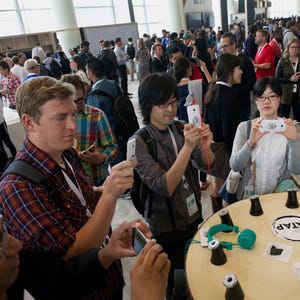Many different integrated apps have tried to introduce recruiting and job finding into Facebook, but none have been entirely successful. I was invited to one I had not heard of before – Glassdoor – and it seemed interesting so I tried it. I will now review this app and website – a new way to find jobs and leave feedback on past and current employers, anonymously.
Glassdoor was voted the ‘Best Employment Site 2012’ by the Webby Awards, and is touted as ‘a free inside look at jobs and companies’. Employees can leave anonymous salary information, reviews, interview questions and photographs from current and past employees. Think TripAdvisor for jobs – if you are considering a job offer from a particular company you probably want to check out what others think of it.
Activation
Whether you are invited to join Glassdoor (as I was) or you search for the app via Facebook, a connection page first appears, where you can alter profile visibility. As with all apps, you can set the visibility as ‘Public’, ‘Friends’ or ‘Me’ – which may be useful if you have current employers or colleagues in your ‘Friends’ list. This automatic connection to your Facebook profile allows Glassdoor to use your original Facebook profile information (such as schooling and jobs) to create a separate Glassdoor profile (you can change/delete this information later on).
A typical Glassdoor profile lists only ‘Work Experience’, ‘Education’ and ‘Connections’ with current job title under your name and uses your current Facebook profile picture (so make sure it’s a good one, as you can’t change it!). The profile information is linked back to Facebook-type pages for each company (to be discussed later).
Profile Completion
Once signed up, I had a 60% complete profile with a ‘Basic’ membership. The first important step was to complete my profile with Glassdoor giving me a list of tasks to do, each with a percentage that would total 100% when all three were done. My three tasks were ‘Add current city’, ‘Invite 3 friends’ and “‘Like’ or ‘+1’”. The ‘Add current city’ was an easy option in the Profile, with drop down suggestions for town names and locations.

The ‘Invite 3 friends’ option was annoying. This is done through a page where you are invited to ‘Include’ a certain amount of Facebook friends (either ALL of your Facebook friends, or all of your colleagues from school, University or a workplace), with the idea that the more friends you have, the more connections you will have. The invite window (a “private” request) is not very helpful either – you cannot remove people – so you cannot choose specific people to invite to the app.
The Like or +1 element of the profile is a clever marketing tool for the company’s social pages. You have to complete both elements – liking the Facebook page and +1 the company on Google+ to gain the added 10%. Once you ‘Like’ the company, it will appear on your profile page, enticing your friends to sign up. This will allow Glassdoor’s presence on both sites to increase.
You are then asked to write a review/salary/interview post or upload a workplace photograph to grant yourself an ‘Unlimited’ membership. There are two types of membership on the Glassdoor website – the ‘Basic’ membership and the ‘Unlimited’ membership.
The website states that “all new members automatically get a Basic Membership with 1-month of access to everything posted by our community.” However, no payment is needed for unlimited membership (as the site is financed by large ads on every page), as it “only takes a minute” to upgrade. “Simply give back to the community by posting an anonymous inside look of your own — remember, your posts are anonymous.”
The wording is extremely casual and friendly, and shows a sense of applying to a younger generation – maybe graduates or people looking for their first job. It is also a crucial point that everything is anonymous – no matter whether you are posting a positive/negative report, you will never be found out.
Connections
The front page of Glassdoor boasts the bold sentence: “Most jobs are found through an inside connection. Each friend that joins Glassdoor allows you to see more connections at more companies”. The main aspect of Glassdoor is the more people you add (who then accept), the more connections you will have, and also access to a higher number of companies will be granted. However, people have been getting annoyed at the app requests on Facebook (as a simple Twitter search of ‘Glassdoor Facebook’ will show), as not everyone may be looking for a job at the time you invite them!
Writing a Review
When you write a ‘Company Review’ or post a Salary, you are asked to select between Current or Former Employer. If your employer is not yet listed, you are asked to enter some details (website, type and number of employees (from drop down menus), and the Headquarters City).
Once submitted, a new form appears (with again a reminder that it is anonymous at the top) and the user can rate a number of elements of the job, as well as give ‘Pros’, ‘Cons’ and ‘Advice to Management’ as well as whether you would recommend this employer to a friend, and where your job prospects are looking for the next 6 months (up or down). Next to each submission form is an important ‘Message to Our Community’, a sign that fairness and good quality is crucial to Glassdoor.

When submitting a photo, the rules outline that a “behind-the-scenes look” is needed and the user is informed that they may upload 10 photos. All content is reviewed before being posted on the site – a simple way to ensure that people cannot tarnish a company or the website itself.
The website is then split into four sections – ‘Jobs’, ‘Companies & Reviews’, ‘Salaries’ and ‘Interviews’, with a separate blog.
Jobs
‘Jobs’ lists available Jobs in a certain area, with change range and date posted. Each job links to the Company Overview, Reviews, Salaries and Interviews of the company posting the job – and these elements are extremely detailed (the Review has an average rating from all posts).
Companies & Reviews
Under this section, there are the ‘Featured Companies’, with the ‘Most Popular Companies’, ‘Best Places To Work’ and ‘Companies and Reviews By Industry’. Each company is given its own page on the site (which they can edit to describe the company’s missions/morals and other details), and a link to its Facebook and Twitter feed. Everything about this website is based around sharing – sharing information on companies, sharing connections with your Facebook ‘friends’, and sharing your use of the site.
Salaries
The ‘Salaries’ part of the website is the one which may be the most problematic – for two main reasons. Firstly, people may lie about their salaries, either directly (to sound as if they earn/have earned more) or indirectly (mistakenly inputting the wrong salary).
Secondly, current employees of the company could use it to look up other people’s salaries (either for the same job title or the same company), and this could cause friction in the workplace and even complaints (if someone was secretly earning more than you, but doing the same job). This is the section that Glassdoor have to take care with the most, to ensure it does not cause more harm than good.
Interviews
Interviews are listed by job and company, with the most popular from both in separate tables. Interviews are also tagged, with the most used tags in a chart at the bottom of the page. When an interview question is clicked on, it can be answered, tagged or commented upon. This is useful for interviewees (to prepare) and interviewers alike (as they can change the questions they ask, in case it becomes a very popular post on the website).
Is Glassdoor useful for job seekers?
Yes. It is an extremely handy tool which people can use to choose the right company and job to apply for (by using the reviews and salaries section). However, it needs to be handled with caution – rogue posts (both positive and negative) may have passed through the system, and it should be used with a pinch of salt.
Is Glassdoor useful for employers?
It is more necessary than useful for employers. Again, the posts should be taken with a pinch of salt, but may be needed to improve work ethics at the company, and fairness in terms of salaries, as well as changing interviews to make sure that every candidate passes the interview easily.
Pros?
There are many different pros for Glassdoor:
- This website is one of a kind – there is no other major site where you can review your company, post your salary, photos and interview questions, all anonymously.
- Reviews are always checked before they are posted to ensure for a fairness, with guidelines clearly set out so as not to allow any malicious posts.
- Glassdoor uses prizes to get people to write anonymous reviews or salary posts – in this case I was offered the chance to win a free iPad in return for a post – so you may receive a really good prize for writing 100 words.
- It is extremely difficult to find negative reviews – there is no lowest rated company chart etc. This makes it fairer to companies to ensure that they are not brought down or trash talked.
- It has a clear layout, with easy navigation and titles, and an interesting design.
Cons?
- The ‘include’/invite friends element is the main con. Sometimes with these apps, you don’t want to include all your friends (such as bosses/fellow colleagues which you may have in your Facebook friends). A quick Twitter search of ‘Glassdoor Facebook’ brings up a lot of frustration about the app requests sent by friends.
- You cannot change your picture (say if you want a different photo to your Facebook profile picture).
- The website is coded in HTML, and could be made to look slicker and smoother.
Conclusion
In conclusion, Glassdoor is an interesting website with many pros and cons. It works in terms of ‘connections’, so is extremely similar to LinkedIn. Is it trying to be a better LinkedIn or just a simpler LinkedIn (that anyone can connect to), with the added anonymous review elements? I feel that Glassdoor is extremely useful for first-time job seekers (as well as employers), but is more aimed towards the Facebook generation, who like to share a vast amount of information – as it easy to use with its casual language, prizes and large graphics.
via How Glassdoor Gives Candidates an Inside Look at Employers.
How Glassdoor Gives Candidates an Inside Look at Employers






















